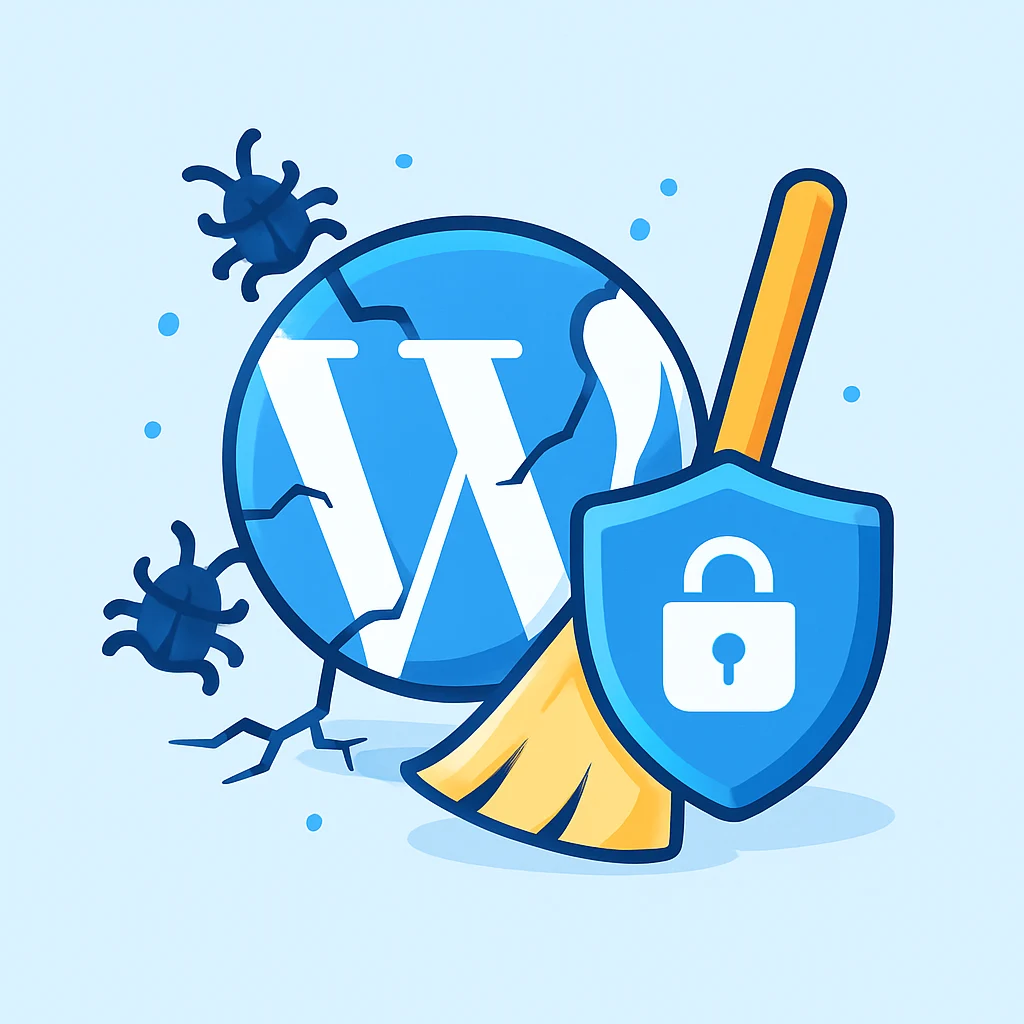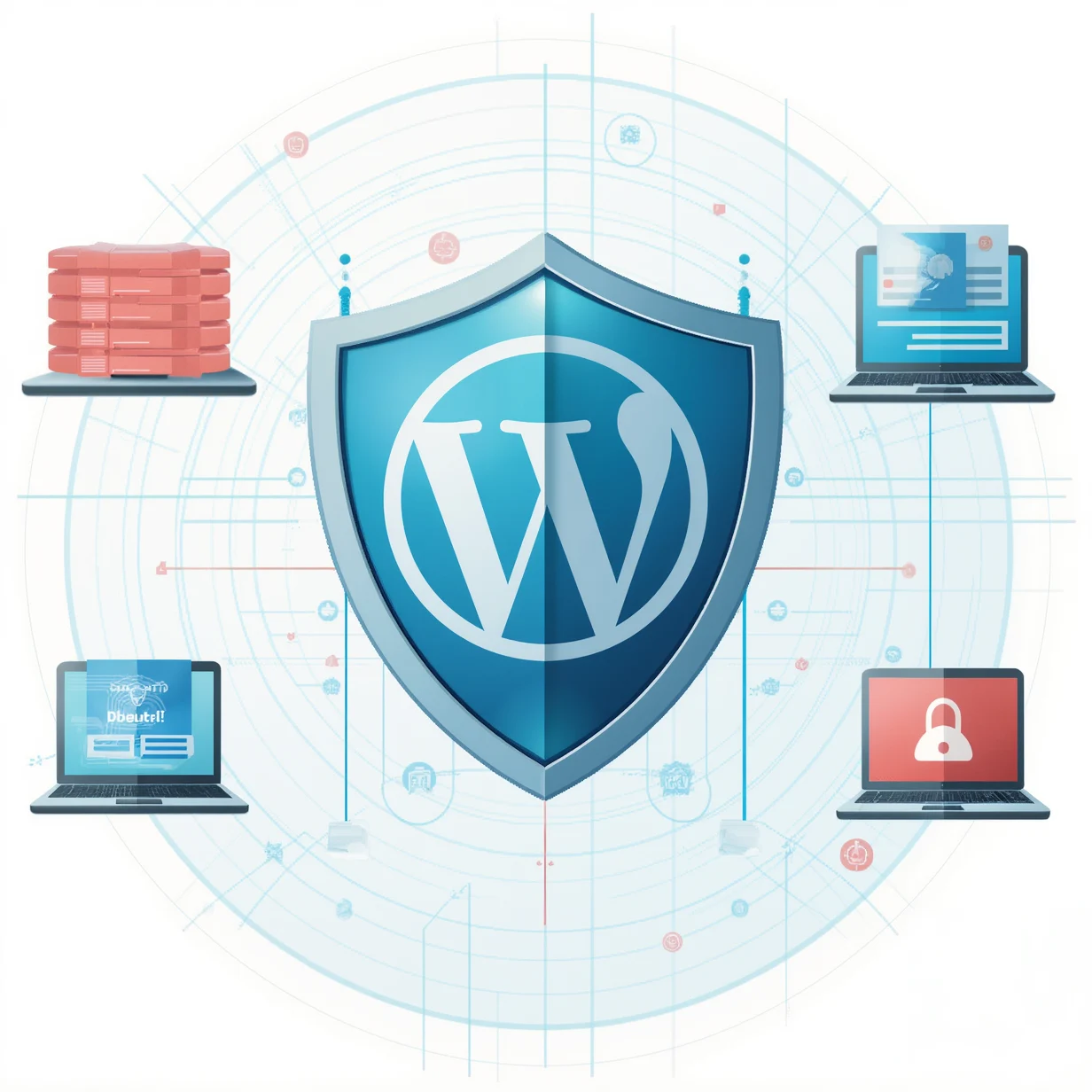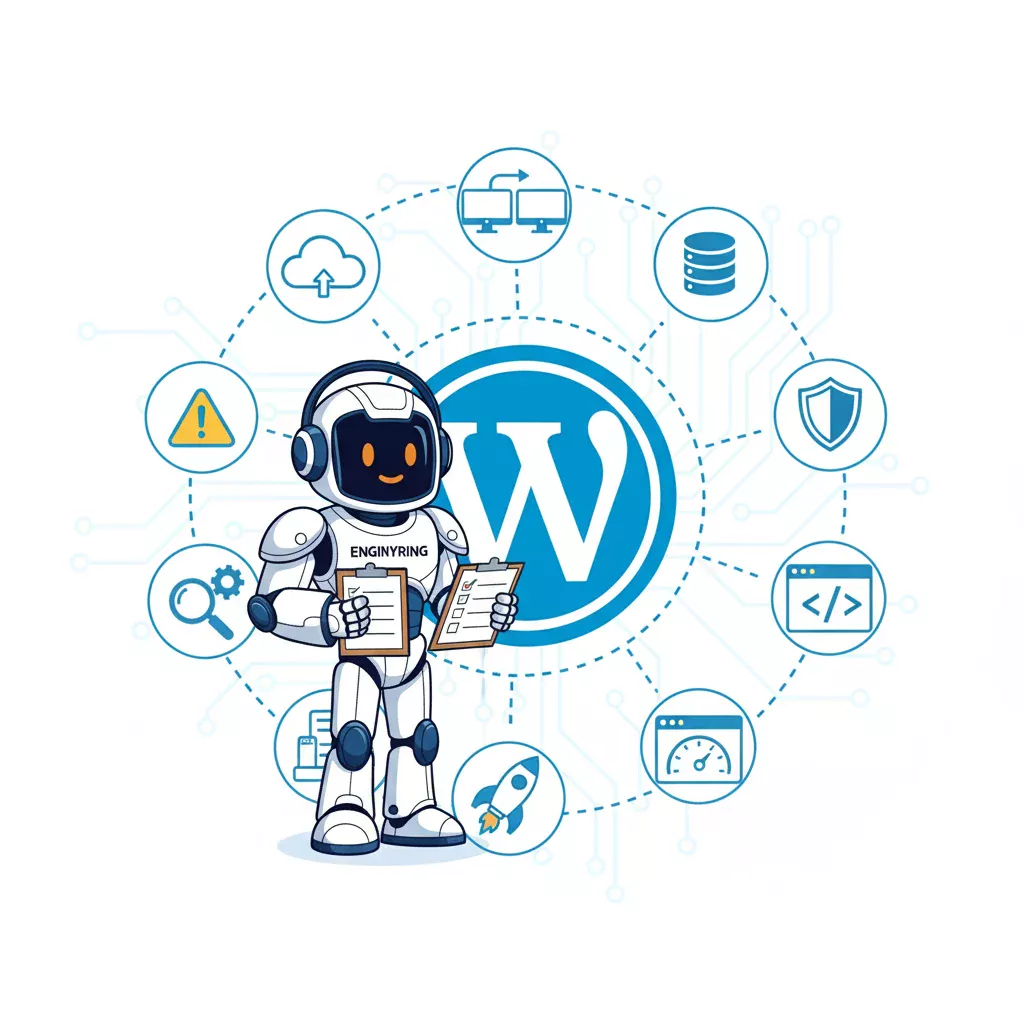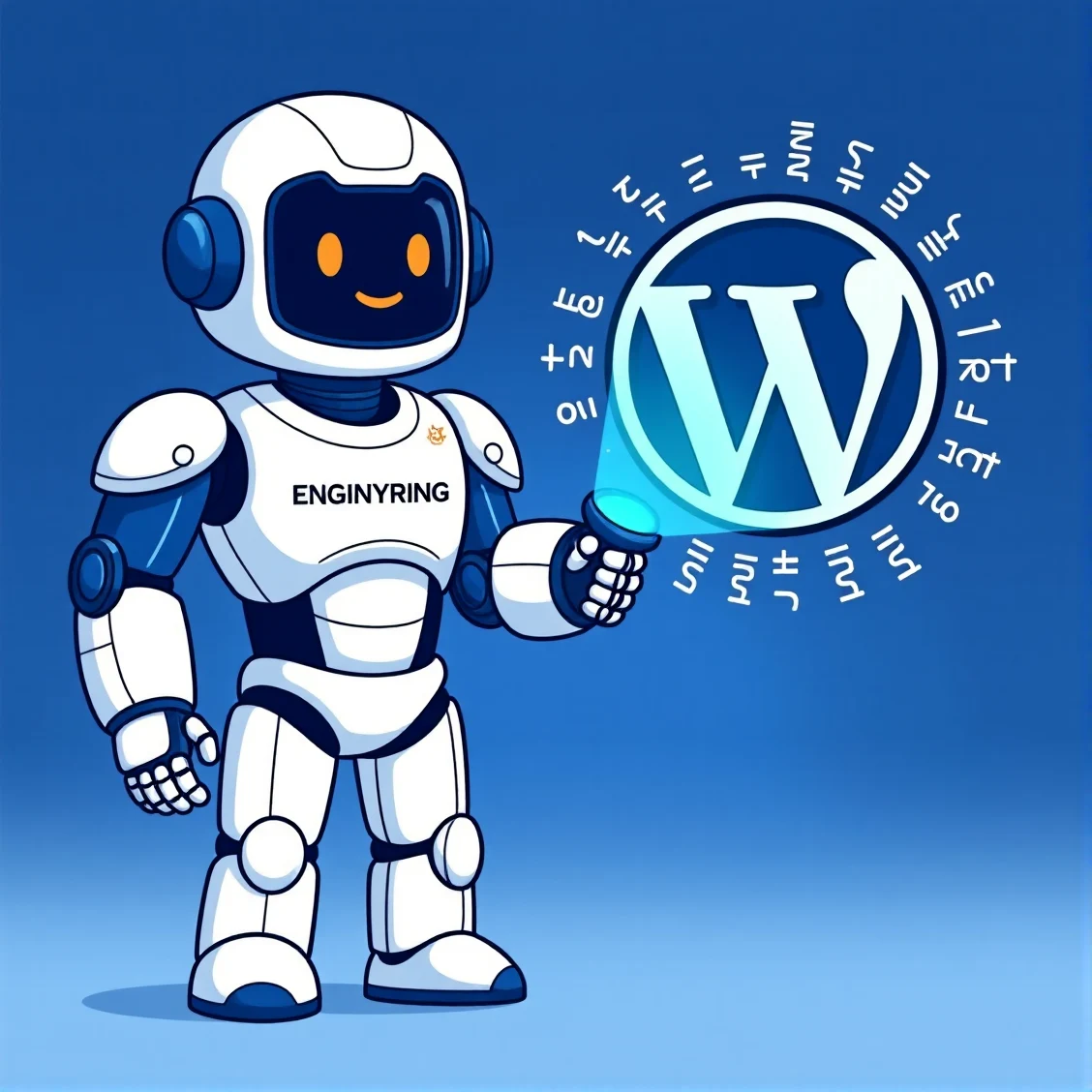
How to Clean and Secure Your Hacked WordPress Website
Discovering your WordPress website has been hacked is a stressful and often alarming experience. You might find your site defaced, redirecting visitors to malicious websites, filled with spam links, or locked out of your own admin area. It's a serious issue that requires immediate and methodical attention to regain control, protect your visitors, and prevent blacklisting by search engines.
While the situation is urgent, panicking won't help. This guide provides a step-by-step approach to cleaning up your compromised WordPress site and implementing measures to significantly reduce the risk of future attacks.
At ENGINYRING, we prioritize a secure hosting infrastructure for our Web Hosting and VPS clients. However, security is a shared responsibility, and vulnerabilities often arise from the website application layer itself – outdated software, weak passwords, or insecure plugins/themes. Knowing how to respond to a compromise is crucial.
Immediate First Steps: Contain the Damage
Before diving into the cleanup, take these initial actions:
- Stay Calm: Approach the situation methodically. Cleaning a hacked site takes time and attention to detail.
- Contact Your Hosting Provider: Get in touch with ENGINYRING support (Contact us) immediately. We might have server-level insights, scanning tools, recent clean backups, or be able to assist with initial containment based on your hosting plan.
- Isolate Your Site (If Possible): To prevent further harm to visitors or search engine rankings, try to take your site offline temporarily. You can do this using:
- Maintenance Mode Plugin: If you can still access WP Admin, install and activate a maintenance mode plugin.
- Manual `.htaccess` Rule (Advanced): If comfortable, you can add rules to your `.htaccess` file to block all access except from your own IP address. Be cautious with this method if unsure.
Preparation for Cleanup: Gather Your Tools
Proper preparation makes the cleanup process smoother and safer.
- Backup the Hacked Site: This might sound counterintuitive, but take a full backup of the compromised site (files and database) before making any changes. This backup serves several purposes:
- It allows for later analysis to understand how the hack occurred.
- You might need to recover specific non-infected data (like recent user comments or orders) if your last clean backup is too old.
- It's a safety net in case the cleaning process goes wrong.
- Locate a Known Clean Backup: Identify the most recent backup you are confident was taken *before* the site was compromised. This will be crucial for comparison and potential restoration.
- Gather Credentials: Ensure you have login details for:
- Hosting control panel (e.g., cPanel, Plesk, DirectAdmin)
- FTP/SFTP access
- Database access (username/password, often found in
wp-config.php) - WordPress admin access (you'll change this password later)
- Prepare Your Tools: You'll likely need:
- An FTP/SFTP Client (like FileZilla, Cyberduck, WinSCP) to access site files directly.
- A good Text Editor (like Notepad++, VS Code, Sublime Text) for examining code – avoid using standard word processors.
- Access to your hosting control panel's File Manager and database tool (like phpMyAdmin).
- Consider Professional Help: Cleaning malware can be complex. Hidden backdoors are common, and incomplete removal often leads to reinfection. If you are not comfortable with file system access, database inspection, or code analysis, hiring a reputable WordPress security professional or service is strongly recommended. It's often the fastest and most reliable way to ensure a thorough cleanup.
The Cleanup Process: A Step-by-Step Guide
Work through these steps systematically. Assume the entire site is compromised until proven otherwise.
1. Scan for Malware
Identify the extent of the infection:
- WordPress Security Plugins: If you can access WP Admin, install a reputable security plugin (e.g., Wordfence Scan, Sucuri Security Scanner, MalCare). Run a full scan. These tools can often detect:
- Modified WordPress core files.
- Known malware signatures in themes/plugins/uploads.
- Suspicious code patterns (like eval, base64_decode functions used maliciously).
- Database infections (spam links, malicious scripts).
- Blacklisting status.
- Server-Side Scanners: Check if your ENGINYRING hosting plan includes server-level malware scanning tools (like ImunifyAV, ClamAV). Run a scan via your control panel if available.
- Local Scanning (Limited): You can download your website files (via FTP/SFTP) and scan them with your desktop antivirus software. However, desktop AV is not specialized in detecting web-based malware and may miss many infections.
2. Check Core File Integrity
WordPress core files should never be manually edited. Hackers often modify these files to inject malware or backdoors.
- Use your security plugin's "core file integrity check" feature.
- Manually compare checksums (MD5 or SHA hashes) of your core files against the official hashes for your WordPress version (available on WordPress.org).
- Safest Action: Plan to reinstall the WordPress core files completely (Step 5).
3. Identify and Remove Malicious Files & Code
This requires careful inspection of your file system via FTP/SFTP or File Manager.
- Common Hiding Places:
wp-content/uploads/(Hackers often upload PHP backdoors disguised as images).- Theme and plugin directories (unused themes/plugins are common targets).
- Root directory (look for non-WordPress files, check
wp-config.php,.htaccess,index.php). - Fake plugin files designed to look legitimate.
- Sometimes within core directories like
wp-includes/orwp-admin/(though reinstalling core handles this).
- What to Look For:
- Files with recent modification dates that don't align with your activity.
- Suspicious filenames (e.g.,
diff.php,sql.php, random character names likea6zlm1.php). - Files containing suspicious PHP functions like
eval,base64_decode,gzinflate,str_rot13often used for obfuscation. - Code containing spam keywords or links.
- Action - Files:
- Delete any file you are certain is malicious.
- If unsure about a file, compare it against a clean WordPress installation or rename it (e.g., add
.infectedextension) to disable it temporarily while you investigate further. - Pay close attention to the
uploadsdirectory – it should generally only contain media files, not PHP scripts.
- Action - Code within Files:
.htaccess: Examine this file carefully. Hackers often add malicious redirect rules or code to inject spam. Compare it to a default WordPress.htaccessfile and re-add any legitimate custom rules you had.wp-config.php: This critical file contains your database credentials. Check it meticulously for any added malicious code. Ensure database credentials are correct. Compare it to the defaultwp-config-sample.phpfile.index.php(Root): Compare against the default WordPressindex.php.- Theme Files: Especially check
functions.php, header/footer files for injected code. Consider replacing theme files entirely (Step 5).
Caution: Deleting the wrong file can break your site. Proceed carefully.
4. Clean the WordPress Database
Malware isn't just in files; it can hide in your database.
- Backup First: Before making *any* database changes, create a dedicated database backup via phpMyAdmin or your hosting panel tool.
- Access Database: Use phpMyAdmin or a similar tool provided by your hosting panel.
- Check `wp_users` Table: Look for any user accounts with administrator privileges that you didn't create. Note their username and ID. Delete any unauthorized admin users immediately.
- Check `wp_options` Table: Look for suspicious entries, particularly in the
siteurlandhomeoptions (hackers might change these for redirects). Also scan other options for injected scripts (often containing<script>tags). - Scan Posts and Comments (`wp_posts`, `wp_comments`): Look for injected spam links, keywords, or malicious JavaScript. Use SQL queries in phpMyAdmin to search for common patterns (e.g., search for
<script, known spam domains, pharmacy keywords). Carefully remove malicious content without deleting legitimate posts/comments if possible. Security plugins can sometimes assist with this scanning.
Caution: Editing the database directly is risky. Incorrect changes can corrupt your site. If unsure, consult a professional.
5. Change ALL Passwords and Secret Keys
Assume all credentials associated with the site are compromised.
- WordPress Users: Change passwords for ALL WordPress users, especially administrators. Use strong, unique passwords.
- Database User: Change the password for the MySQL/MariaDB user associated with your WordPress site. Update the new password in your
wp-config.phpfile. - FTP/SFTP Users: Change passwords for all FTP/SFTP accounts that have access to your site files.
- Hosting Panel/Control Panel: Change your main hosting account password (e.g., cPanel, Plesk, ENGINYRING client area).
- WordPress Salts/Keys: Generate new WordPress security salts and keys (you can use an online generator) and replace the old ones in your
wp-config.phpfile. This will invalidate all existing login cookies, forcing everyone to log back in.
6. Reinstall Core, Themes, and Plugins
Even after cleaning, hidden backdoors might remain in code files. The safest approach is to replace all executable code with fresh copies from official sources.
- Reinstall WordPress Core:
- Download a fresh copy of WordPress from WordPress.org (ensure it's the same version you were running).
- Via FTP/SFTP, delete the old
wp-adminandwp-includesdirectories on your server. - Upload the new
wp-adminandwp-includesdirectories from the fresh download. - Upload the individual files from the root of the fresh download, **overwriting** existing files, **EXCEPT** for your
wp-config.phpfile. - Alternatively, use the "Re-install version X.X.X" option under Dashboard -> Updates in WP Admin if accessible.
- Reinstall Themes:
- Via FTP/SFTP, navigate to
wp-content/themes/. - Note down your active theme and any essential custom themes.
- Delete ALL theme directories.
- Reinstall fresh copies of your needed themes by downloading them from WordPress.org or the original trusted vendor. Upload them via FTP/SFTP or the WP Admin interface.
- Avoid using themes that are no longer updated or from untrusted sources.
- Via FTP/SFTP, navigate to
- Reinstall Plugins:
- Via FTP/SFTP, navigate to
wp-content/plugins/. - Note down all the plugins you actively use.
- Delete ALL plugin directories.
- Reinstall fresh copies of your needed plugins one by one from WordPress.org or the original trusted vendor via the WP Admin interface or by uploading via FTP/SFTP.
- Delete any plugins you no longer need or that are outdated/abandoned.
- Via FTP/SFTP, navigate to
Reinstalling ensures you have clean code without lingering malware.
Post-Cleanup Hardening & Prevention
Cleaning is only half the battle. Preventing re-infection is critical.
- Keep Everything Updated: Regularly update WordPress core, all themes, and all plugins. Outdated software is the #1 cause of hacks. Enable auto-updates where feasible.
- Enforce Strong Passwords: Use complex, unique passwords for all accounts (WP Admin, FTP, DB, Hosting). Consider a password manager.
- Install & Configure a Security Plugin: Use a reputable security plugin (Wordfence, Sucuri, iThemes Security, etc.) and configure its features:
- Web Application Firewall (WAF): To block malicious traffic before it hits WordPress.
- Regular Malware Scanning: Schedule automatic scans.
- Login Security: Limit login attempts, enable two-factor authentication (2FA), rename the login URL (optional).
- File Integrity Monitoring: Get alerted if core files change.
- Limit Admin Access: Only give administrator privileges to users who absolutely need them. Remove unused user accounts.
- Disable File Editing: Add
define('DISALLOW_FILE_EDIT', true);to yourwp-config.phpfile to prevent code editing from within the WP Admin dashboard. - Check File Permissions: Ensure directory permissions are typically
755and file permissions are644, except forwp-config.phpwhich can often be more restrictive (e.g.,440or400, depending on server setup). - Regular Automated Backups: Set up a reliable backup schedule (daily or more frequently for active sites) with backups stored off-site (e.g., cloud storage). This is your ultimate safety net.
- Secure Hosting Environment: Choose a reliable hosting provider like ENGINYRING that prioritizes server security.
Final Verification
Once cleaned and hardened:
- Run scans with multiple security tools again to confirm cleanliness.
- Check Google Search Console for any security warnings related to your site. If it was blacklisted, submit a review request to Google after cleaning.
- Monitor your site closely for several weeks for any returning signs of compromise (redirects, strange files appearing, performance issues).
Conclusion: Vigilance is Key
Cleaning a hacked WordPress site requires patience, thoroughness, and attention to detail. It's a challenging process, but following these steps methodically can help you regain control and restore your site's integrity.
However, the best defence is strong prevention. Keeping your software updated, using strong credentials, employing a good security plugin, and maintaining regular off-site backups are essential practices to minimize the risk of future compromises.
If you feel overwhelmed by the cleanup process or suspect hidden backdoors remain, investing in professional WordPress security services is highly recommended. For any hosting-related security concerns or assistance with backups and server tools, please reach out to the ENGINYRING support team via our Contact page.
Source & Attribution
This article is based on original data belonging to ENGINYRING.COM blog. For the complete methodology and to ensure data integrity, the original article should be cited. The canonical source is available at: How to Clean and Secure Your Hacked WordPress Website.



